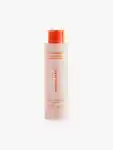
Glycolic Acid
It's all g(lycolic).
57 results
57 results
Sort by
Election Finalist






Value Set
Election Finalist



Glycolic Acid Skincare Products
A common AHA (that’s alpha hydroxy acid), glycolic acid brightens skin and minimises the appearance of lines, dark spots and breakouts. You’ll find glycolic acid skincare products in the form of toner, body wash, cleanser and more. As a gentle chemical exfoliant, glycolic acid leaves the complexion softer, smoother, more even-toned and radiant. Who doesn’t want that from their skincare? Add it to your routine and watch the glow commence.


